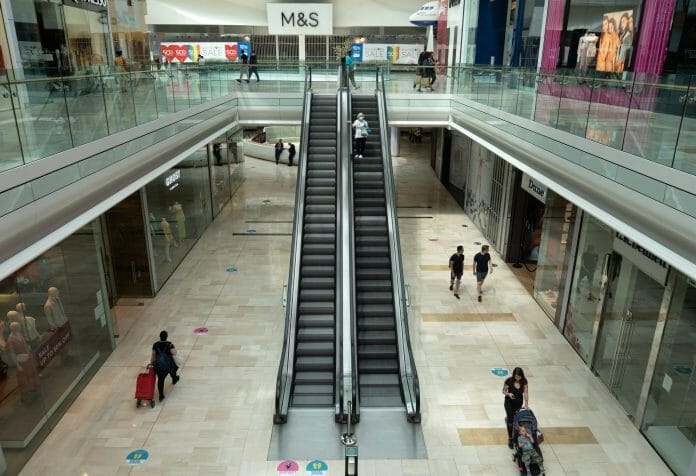By Sharon Chang
Innovate or die – a common concern observed throughout the effects of the Movement Control Order (MCO) in reshaping the business landscape.
Small and medium enterprises (SMEs) took the hammering — some reported a drop in sales as much as 90 percent — with restrictions to operate brick and mortar stores, interstate travel, and all sorts of social events, creating financial strangleholds in the retail industry.
As Malaysia SMEs are in a precarious situation – seeing zero cash flow — abandoning their once tried-and-true methods of conducting business and, instead, adopting a new strategy could be the only way to survive this new normal.
Predominantly, business owners must be prepared to expect that their customers will not be visiting their stores as often as they used to before Covid-19, says Vernon Chua, Co-Founder and Chief Executive Officer of Innergia Labs. This decline in footfall traffic is going to weigh heavily on their sales and therefore their cash flow.
Going digital is key – more so amid the prolonged pandemic. Chua believes that for business survival, business owners need to repurpose their communications and marketing through online channels and messaging applications to engage with their customer base.
“Generally, there are businesses who just hanker down by reducing costs and preserving cashflow to ride out the storm,” Chua says in a response to a question. Though it might seem to be a valid strategy as survival may perhaps be their main objective, however, if all they did were cut pays, shut down outlets and negotiate for lower rentals while waiting for the government’s stimulus package to take effect, it will be an opportunity lost to grow their business.
Hence, businesses should gear towards building their online presence and fine-tune their branding, Chua points out, to have a higher chance of survival and thrive when the economy recovers.
“They need to actively engage with their customer-base, foster complementary partnerships and innovate new products while improving their SOPs to build trust with their community during the pandemic,” he asserts.
Though the situation has generally improved, the landscape and dynamics have shifted, and we have found ourselves a new normal. The major challenge SMEs face is the low consumer confidence in the market.
Even though the government has lifted the restriction for the economic and social sectors to open, public sentiments and consumer spending have evolved, Chua tells Business Today.
In the CEO’s viewpoint, Covid-19 has forced consumers to spend responsibly which impacts almost every business’s cash flow and liquidity.
Besides the obvious cost-cutting measures Chua mentioned, he generally advises his clients to try and raise cash upfront through gift cards and discounted vouchers.
“Realistically, companies should also clear up their slow-moving stock as much as possible through clearance sales in order to free up cash flow in their business,” Chua explains. Having sound cashflow is vital as it opens more options for businesses to navigate during this period of uncertainty.
In addition, he also recommends business owners to start going through their data to understand their customer behaviours to help introduce new products and promotions that will keep them engaged and coming back.
“Besides, SMEs should also look out for changes in their customers’ spending habits in the face of the uncertain economic climate, Chua says.
“Customers’ wallet sizes are on average going to trend downward, and businesses should expect their customers to be more price-sensitive and value-driven.”
A successful business will be able to track the price sensitivity while communicating very clearly the value of their products, according to Chua. Price sensitivity can be tracked through a thorough pricing analysis of their sales to see what prices their customers are comfortable at purchasing. One method is by running multiple promotions to test the waters and analyse the data that comes in to gauge their customers’ response.
The CEO also stresses that businesses should consider investing in data analytics tools which can help companies collect and analyse reliable empirical data to drive their pricing decisions.
Survival of the brick and mortars
There is no doubt that many brick and mortars are struggling to stay afloat long before the coronavirus hit our shores. But the pandemic has intensified and accelerated the disruption seeing some facing an extinction-level event.
It is a grim outlook – but make no mistake, there will be survivors and as a matter of fact, there will always be a place for the brick and mortars in the retail landscape, Chua believes.
“Brick and mortar stores provide better range of experiences for shoppers as compared to online stores,” he opines.
‘Touch and feel’ is still a very different experience from ‘point and click’.
Chua emphasises that a physical store engagement with customers is more personal and at the same time points out the differentiation between themselves from their competitors.
Definitely retail “life” will continue after this cataclysm subsides, but it is going to look quite different, Chua states, but however, he also points out that for businesses to thrive, they need to provide a seamless online to offline experience to cater the different kinds of shoppers while maintaining the tone and feel of the brand.
Beyond survival
The key question is, Chua says, how do you differentiate yourself and carve out a niche in the online space?
SMEs should realise that their competitors are most likely running online as well, blasting emails and ads to all their customers but at the end of the day fatigue starts to set in for the customers,” he remarks.
A strategy that seems to work is the idea of hyper-localisation, the CEO shares. It is a very big word for what is actually a very old and simple idea. Every business operates as part of either a geographic or interest-based community. By understanding the community, they are better able to focus and ‘localise’ their attention on engaging, marketing and selling to their known customers.
“This allows them to build their brand by emphasising the quality of their customers’ experience through service, domain knowledge and superior products,” Chua explains.
Another aspect SMEs should do is educate themselves on the emerging data economy taking place globally, he also points out. They need to understand that their businesses are continuously producing data, and that this data is valuable not just for their own analysis and decision making but for someone else as well, for example their own suppliers.
“SMEs should seriously start considering commoditising their own data, packaging it in a consumable way for FMCGs, brand owners and market research organisations. This has the potential to become a new recurring revenue stream for themselves as well as helping the market understand consumer behaviour and trends that can improve supply chain efficiencies,” Chua concludes.










